Complete Calendar of Mehndi Festivals For 2024
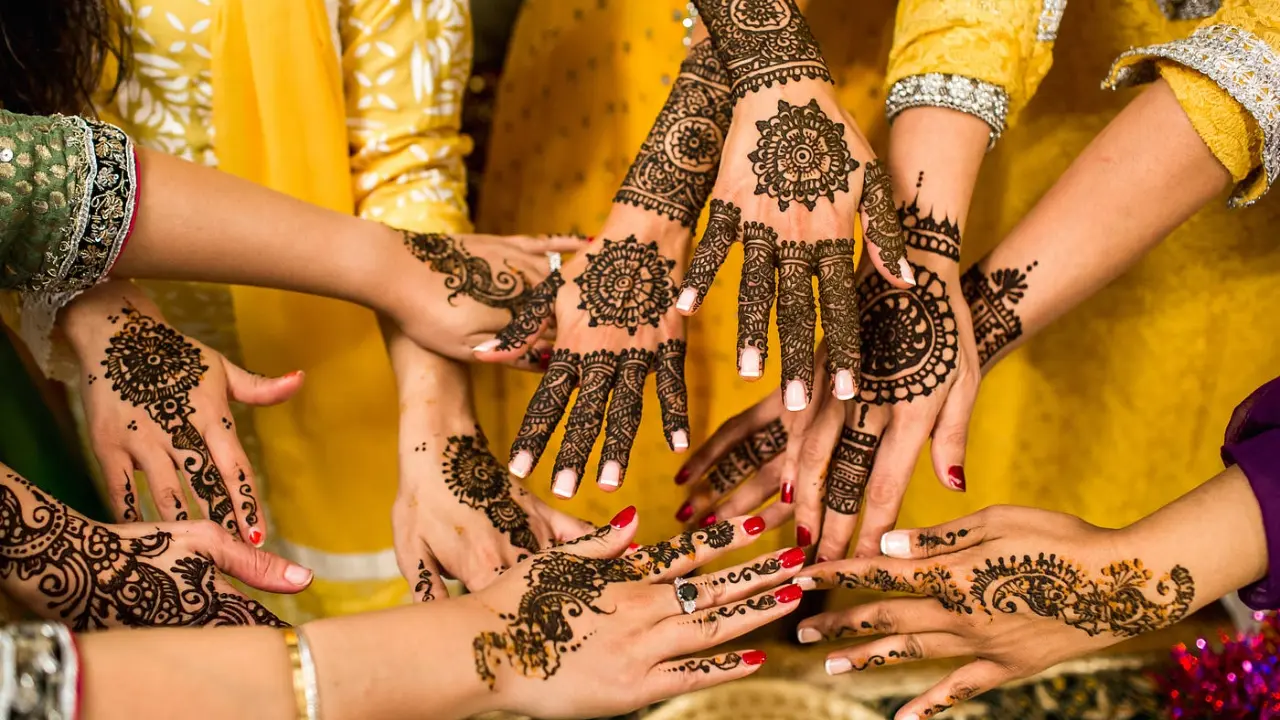
The mehndi Occasions calendar marks auspicious days to use stunning mehndi designs at cultural festivals. From weddings to religious festivals, it is important to decorate your hands with beautiful henna artwork for every occasion. The calendar guides us about different occasions throughout the year where henna application is necessary.
Top 5 Countries of Mehndi Designing
Note: If don’t have time to read the complete article, then just have a look at the following table to overview the complete calendar of Mehndi Festivals for this year.
| Occasions | Expected Dates of Occasions |
| Eid ul Fitr | 11 April 2024 |
| Eid ul Adha | 17 June 2024 |
| Karva Chauth | 20 Oct 2024 |
| Diwali | 1 Nov 2024 |
| Teej | 7 Aug 2024 |
| Navratri | 9 Apr – 17 Apr 2024 |
| Bhai Dooj | 3 Nov 2024 |
| Vat Purnima | 21 June 2024 |
| Durga Pooja | 9 Oct – 13 Oct 2024 |
Eid Ul Fitr
April 11, 2024
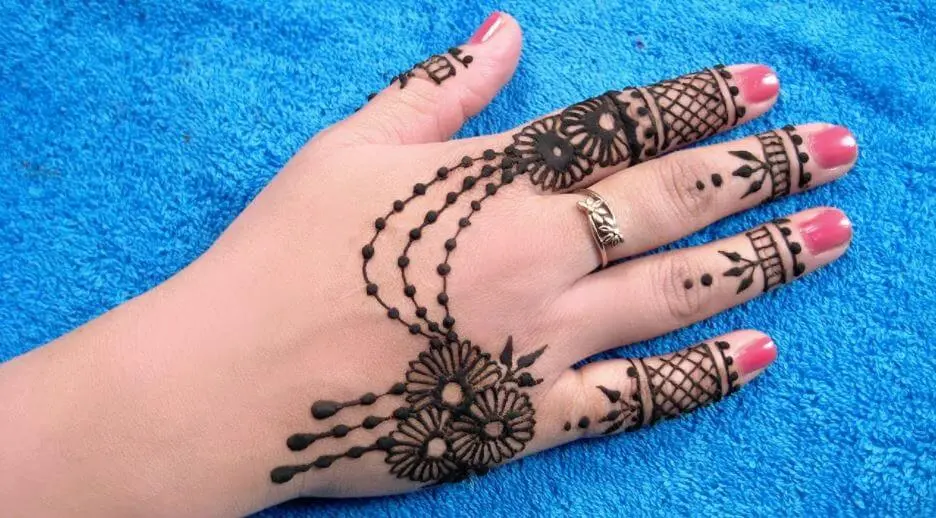
Eid Ul Adha
June 17, 2024

Karva Chauth
Oct 20, 2024

Upcoming Occasions
There are different kinds of events that are coming and people are eagerly waiting for them because of their love for henna art. Some of the main events are discussed below in depth.
- Eid ul Fitr
- Eid ul Adha
- Karva Chauth
- Diwali
- Teej
- Navratri
- Bhai Dooj
- Vat Purnima
- Durga Pooja
Eid ul Fitr
Muslims around the world celebrate Eid al-Fitr because it is a dawn-to-sunset fast at the end of the month of Ramadan. Eid-ul-Fitr falls on the first day of Shawwal in the Islamic calendar; It does not always fall on the same Gregorian calendar, as the beginning of each Hijri month varies depending on when the new moon was observed by local religious authorities. This holiday is known by various other names in different languages and countries around the world.
Eid-ul-Fitr, the auspicious end of the holy month of Ramadan, is characterized by its stunning mehndi designs on hands, reflecting the cultural richness and festive zest of the occasion as families gather to pray, exchange gifts, and share festive treats. Art adds beauty and new traditions to celebrations. During an interview Pakistani henna artist Sara Vazir said,
“ I am a full-time mom. But henna art is a passion for me. She said the art of henna holds memories for me it helps me to create good memories with my clients, especially on eids like Eid ul Filtar and Eid ul Adha.”
Stunning designs from floral to geometric shapes are the renewal, blessing, and joy of community coming together in gratitude and unity is symbolized Individuals embrace the spirit of Eid-ul-Fitr by decorating hands with vibrant henna colors, spreading joy and warmth in every gesture.
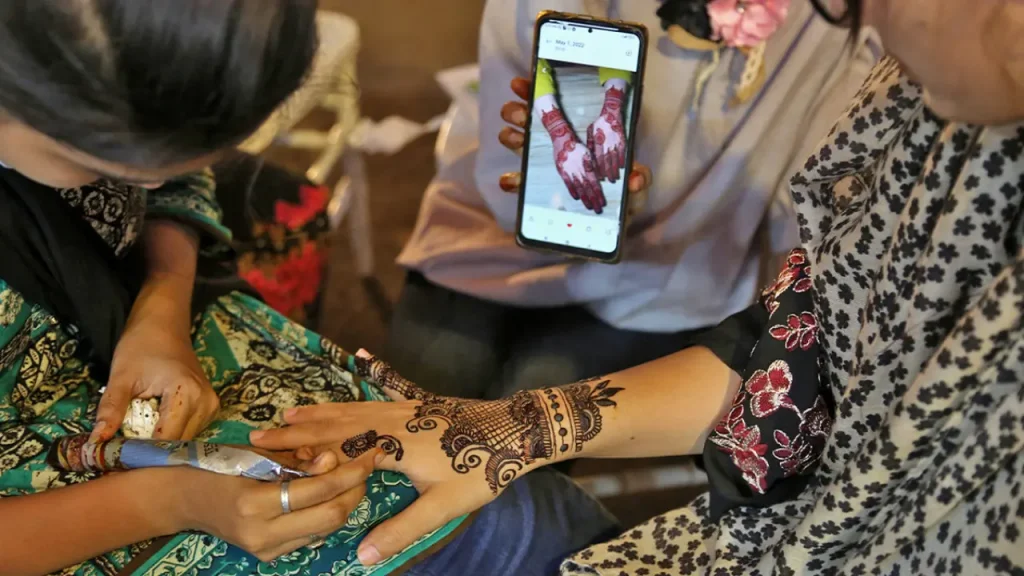
Eid ul Fitr Significance in Different Cultures
Eid-ul-Fitr is spread across countries, each marked by unique traditions and vibrant celebrations. In Turkey, sunny beaches beckon families during the holiday season of Eid, while in Singapore, colorful lights burst in the Geylang Serai area.
In Egypt, visiting the ancients and enjoying public parks such as the Giza Zoo is an integral part of the festival, while in Auckland the Garden of Eden has a carnival-like atmosphere with activities for all in Saudi Arabia Eid begins with prayers and greetings, followed by feasting, falconry.
And traditional activities such as camel races, while in Pakistan Eid-ul-Fitr includes new clothes, prayers, and the sharing of traditional foods such as biryani and khir among family and friends Across the border, Eid is a joyous time, locality, and traditional preferences, enhancing the cultural tapestry of each region.
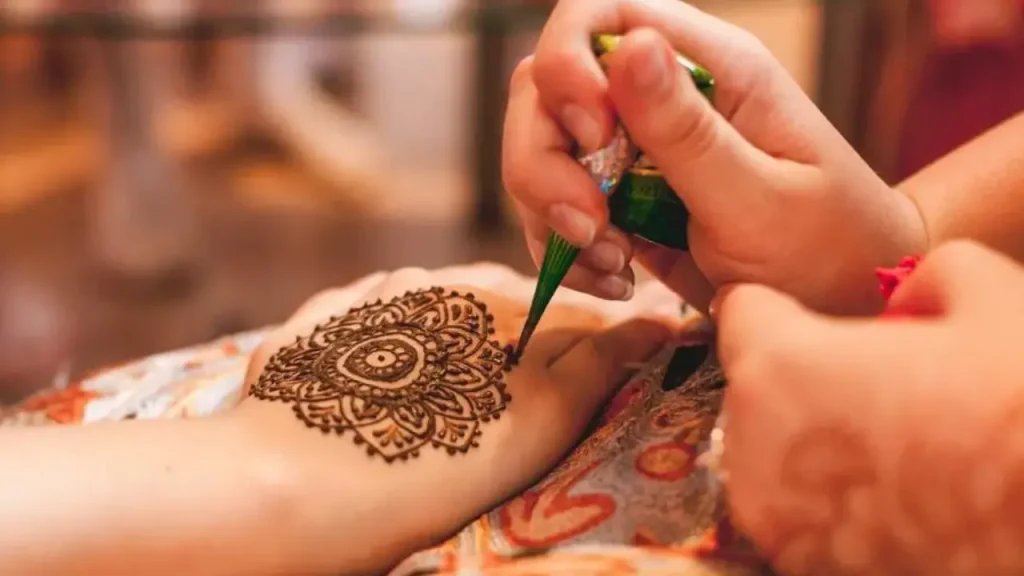
Eid ul Adha
Hands decorated with intricate mehndi patterns during Eid ul Adha reflect the solemnity and reverence of the occasion, reminding us of the sacrifice and faith exemplified by Prophet Ibrahim as families came together to pray, share foods, and meat is distributed to poor and vulnerable mehndi designs symbolize community and gratitude.
Nikita famous Mehndi artist beautifully defines Mehndi art by saying
“You don’t have a right to the cards you have been dealt. You must play the hell out of the ones you’re holding”.
Each mehndi creation holds special traditional and spiritual elements, enhancing the atmosphere with a sense of celebration.
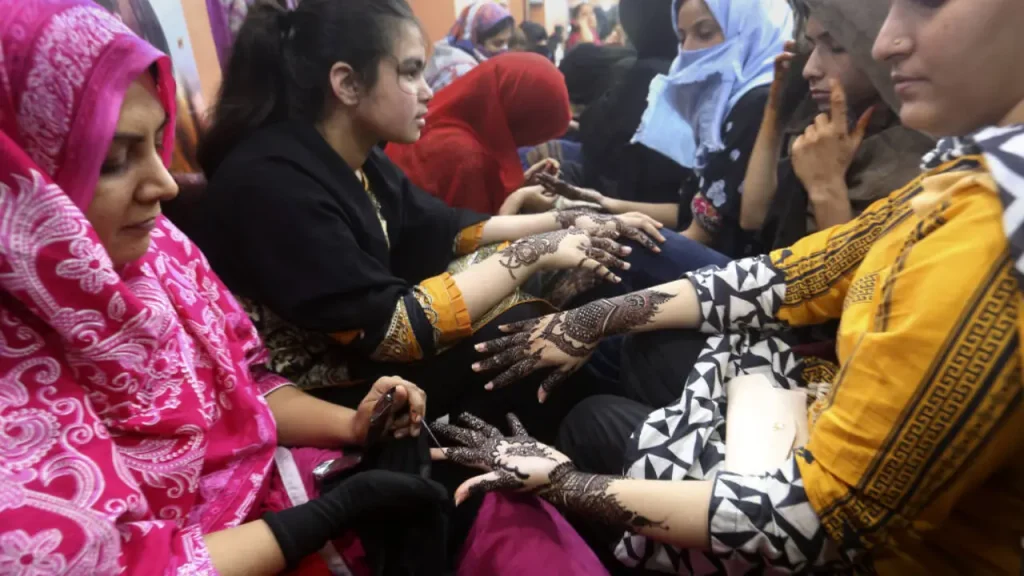
Eid ul Adha Significance in Different Cultures
A unique tradition recognizes Eid-ul-Adha around the world, pilgrims gather in Mecca for the Hajj in Saudi Arabia; African countries celebrate with prayers, feasts, and gifts; the UK emphasizes community, philanthropy, and family gatherings. In India, offerings and feasts mark the occasion, as the CEO joins the community for personal involvement.
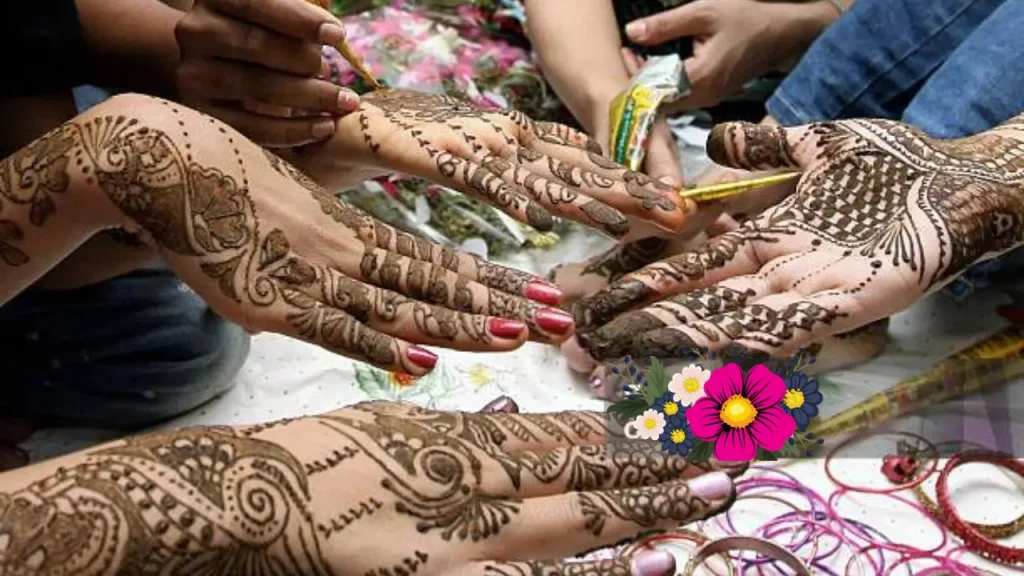
Karva Chauth
Karva Chauth, an ancient Hindu tradition, centers on the fasting ritual discovered by married girls for their husbands’ durability. It falls at the fourth day after the entire moon inside the Hindu lunar month of Kartika, which usually corresponds to October or November inside the Gregorian calendar.
This ritualistic, prayer-based way of life is still reverently and fervently observed across the generations. Karva Chauth, a major Hindu festival celebrated mainly by married women, is a day-long fast that reflects deep love and devotion to their husbands. This is a time when wives fast from sunrise to moonrise, praying that they grant long life and prosperity to their husbands and wives.
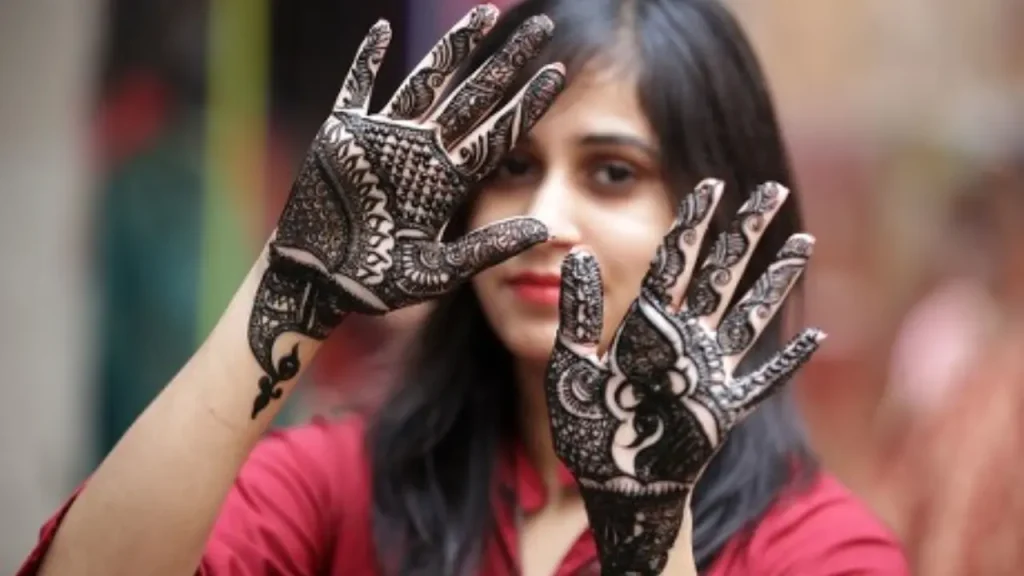
On Karva Chauth, girls’s hands are adorned with complex mehndi designs, symbolizing love, devotion, and the anticipation of marital bliss.
As married women speed from sunrise to moonrise for the well-being and longevity of their husbands, the application of mehndi turns into a cherished tradition, reflecting the splendor and dedication of marital bonds.
The patterns of henna, offering symbols of love, prosperity, and benefits, evoke a feeling of anticipation and party as ladies prepare for the nighttime rituals and the breaking of the shorts with their beloved partners. Karva Chauth as a consequence will become a heartfelt expression of love and dedication, with Mehndi serving as a timeless adornment that enhances the importance of this auspicious event.
Karva Chauth Significance in Different Cultures
Even as Karva Chauth is mostly found in North India, the rituals and customs range throughout special areas. In Punjab, it is celebrated with first-rate fervor, whilst in Rajasthan, it is a grand affair with traditional songs, dance, and stories. Even though generally a Hindu pageant, many girls from other faiths partake in the competition, celebrating the spirit of affection and devotion.
Diwali
Diwali
Nov 01, 2024

Teej
Aug 07, 2024

Navratri
April 09, 2024

It normally falls in the Hindu lunisolar months of Ashvin and Kartika, which generally span from mid-September to mid-November inside the Gregorian calendar.
In one of the major testimonies in Hindu mythology, Diwali is the day Lord Rama, his spouse Sita Devi, and brother Lakshmana go back to their place of birth after 14 years in exile.
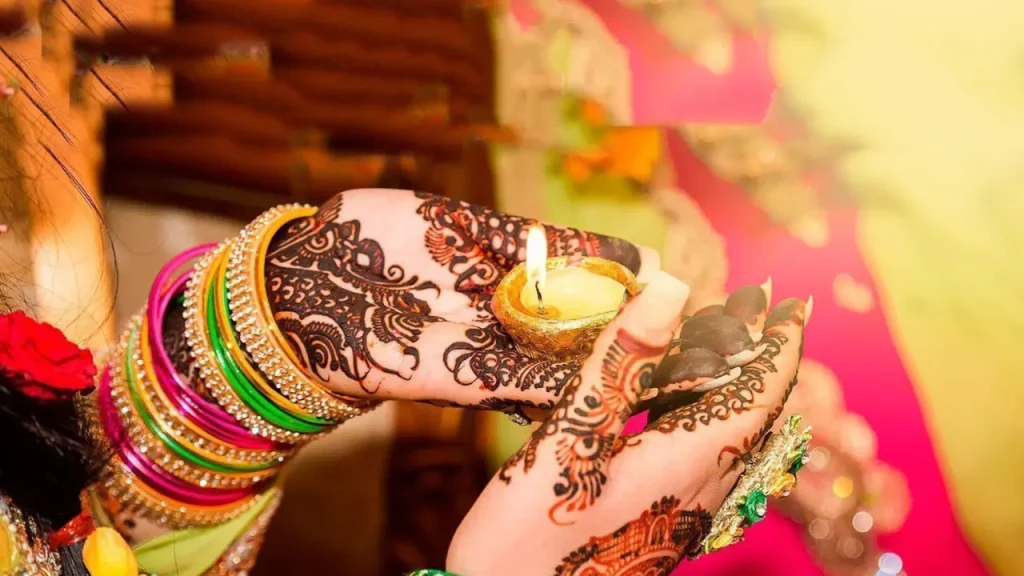
During Diwali, the competition of lighting, and hands adorned with vibrant mehndi designs illuminate the spirit of pleasure, prosperity, and auspiciousness.
Arnett, a famous mehndi designer once said
“I think the best part is to be able to share my Art with others and inspire my fellow men & women to believe in themselves, take a leap, and follow their dreams”
As households prepare for the festivities by decorating their homes with colorful lighting fixtures and rangoli, the application of mehndi provides an additional layer of beauty and subculture to the celebrations. problematic patterns of henna, proposing motifs of diyas, flora, and peacocks, represent the triumph of light over darkness and the renewal of desire and happiness.
Diwali Significance in Different Cultures
Diwali celebrations are unique across India, Delhi’s Ramleela Maidan offers top-notch Ramleela performances, Orissa lights bamboo poles to guide the ancestors, and Kumaoni paints the threshold with aipan art to welcome Goddess. Lakshmi, enjoy wine and feast enjoyment of a beautiful variety, while the cows mark Narakachaturdas with burn idols and communal feasts.
Teej
The Hariyali Teej competition is also celebrated to not forget the reunion of Shiva and Parvati, the day when Shiva prevalent Parvati as his wife. Parvati fasted and was austere for many years and turned widely widespread via Shiva as his wife in her 108 beginning. Parvati is also called Teej mata.
It falls in the monsoon season, symbolising the greenery or “hariyali” that the rain brings with it. The festival is celebrated generally with the aid of girls and has some of customs and rituals related to it.
During Teej, girls’s arms are decorated with complex mehndi designs, symbolizing love, fertility, and marital bliss. As married girls rapid for the nicely-being and sturdiness in their husbands, the application of mehndi turns into a cherished way of life, reflecting the beauty and dedication of marital bonds.
The patterns of henna, proposing symbols of affection, prosperity, and benefits, evoke a sense of anticipation and party as women come collectively to hope, sing, and dance in honor of the monsoon season and the benefits it brings.
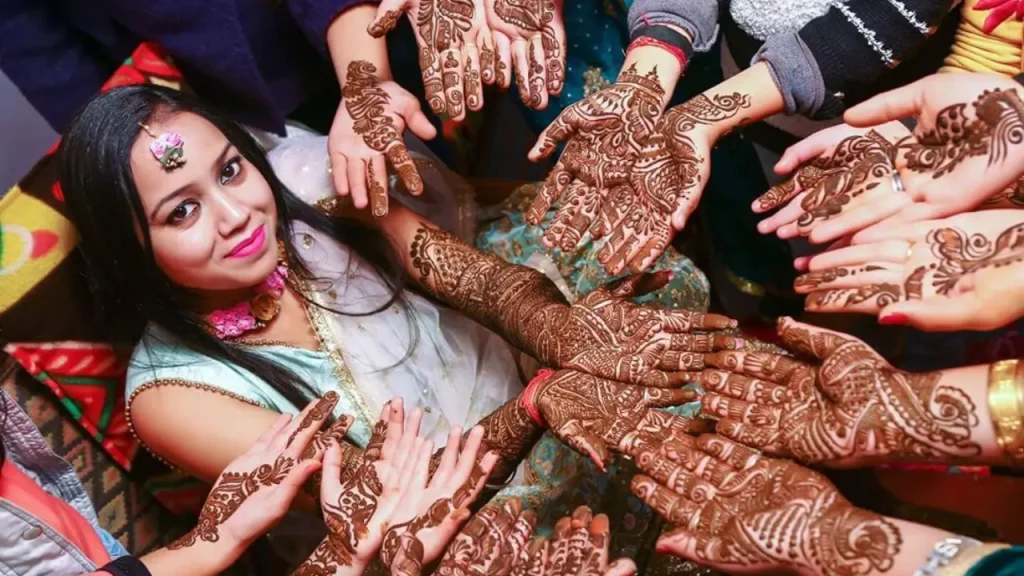
Teej Significance in Different Cultures
In honor of Parvati and Shiva, Teej is celebrated vigorously with dance and jhula in Indian states like Punjab and Rajasthan. Outside India, from the US. to the UAE, the global Nepali community unites through Teej, embracing cultural traditions and fostering friendships through the sharing of dance, music and refreshments
Navratri Mehndi Designs
The legend related to Navratri speaks approximately the tremendous struggle between the powerful demon Mahishasura and Goddess Durga. Each year, on every day of Navratri, an incarnation of “Goddess Durga” is worshipped to have a good time on the day of her victory over Mahishasura, and the last victory of ‘appropriate over Evil.”
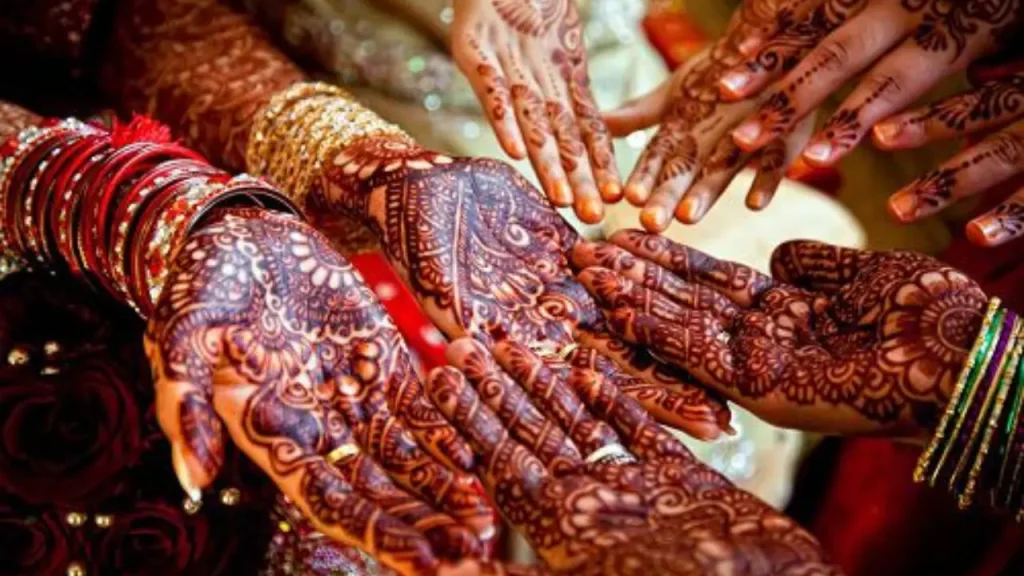
The timing of Navaratri can vary depending on regional and cultural differences, but it often occurs after the spring harvest in many regions, while in others, it coincides with the harvest season.
During Navratri, arms embellished with vibrant mehndi designs echo the festive spirit of devotion, dance, and celebration. As devotees pay homage to the divine feminine strength all through this 9-night time competition committed to Goddess Durga, the utility of mehndi becomes a cherished lifestyle symbolizing auspiciousness and reverence.
Elaborate patterns of henna, providing motifs of Kalash, lotus, and divine symbols, embellishing fingers with beauty and beauty, reflecting the vibrant shades and joyous atmosphere of Navratri. From conventional folk dances like Garba and Dandiya Raas to difficult puja ceremonies, mehndi enhances the festive environment.
Navratri Significance in Different Cultures
Navratri celebrations across India display vibrant diversity, northern states like Punjab and Rajasthan honor Rama’s victory with puja and Ramleela; Gujarat’s Garba, Dandiya, and Raas enliven the western festivals; East Bengal and West Bengal embrace Durga Puja with elaborate pandals and rituals; In the southern regions of Tamil Nadu, Karnataka and Mysore Dasara, Kolu performances are found, along with cultural richness and spiritual belief.
Bhai Dooj
Bhai Dooj
Nov 03, 2024

Vat Purnima
June 21, 2024

Durga Puja
Oct 09, 2024

At some point, Bhai Dooj, arms decorated with elaborate mehndi designs mirror the bond of affection, admiration, and affection between siblings. also known as Bhaiya Dooj or Bhai Tika, this Hindu pageant celebrates the particular dating among brothers and sisters.
Bhai Dooj is celebrated on the second lunar day of Shukla Paksha as in keeping with the Hindu calendar month , Kartik. whereas, Raksha Bandhan is widely known during Purnima or complete moon day in the month of Shravana that’s the 5th lunar month within the Hindu calendar.
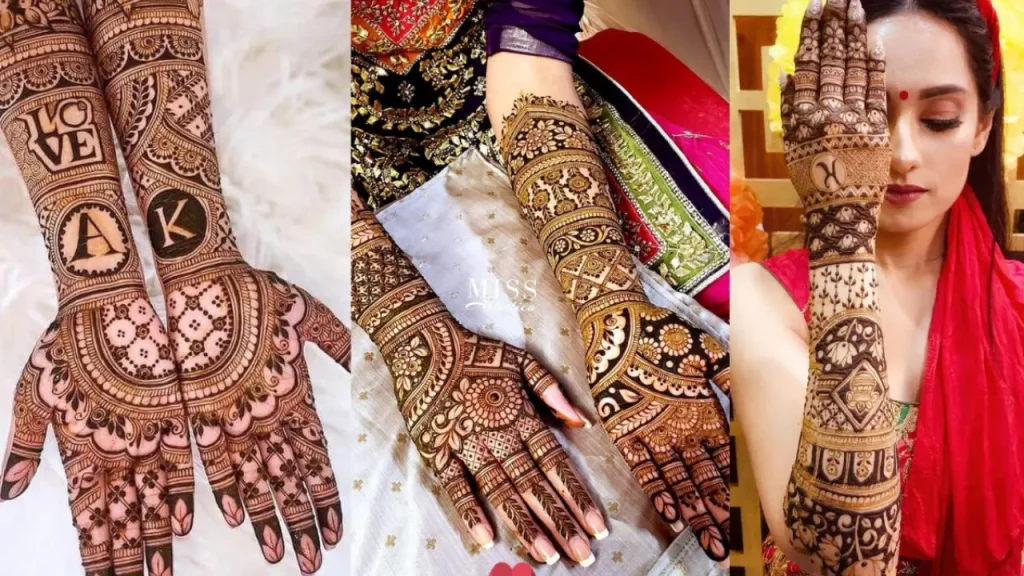
As sisters perform aarti and follow a tilak on their brothers foreheads, the software of mehndi becomes a quintessential part of the ritual, symbolizing the sister’s heartfelt prayers for her brother’s well-being and prosperity. The delicate patterns of henna, featuring symbols of love, protection, and benefits, decorate the palms of sisters, improving the festive environment and expressing their deep affection for his or her brothers.
Bhai Dooj Significance in Different Cultures
Indian communities around the world celebrate Bhai Dooj beyond the boundaries of cultural continuity. Reflecting Indian customs in Nepal, sisters wear tika and pray for their brothers called bhai tika. Bangladesh celebrates Bhai Phota, which includes the Tika ritual, sacred threads and prayers for the welfare of the brothers. Home to the Indian diaspora, Mauritius and Fiji support traditional Bhai Dooj celebrations, fostering family ties and brotherly love.
Vat Purnima
According to this history, Lord Krishna defeated the demon Narakasura on the day of Bhai Dooja and returned to Dwarka. His sister Subhadra welcomed him with fruits, flowers, sweets and lighted lamps. He applied tilak on Krishna’s forehead and prayed for his long life.
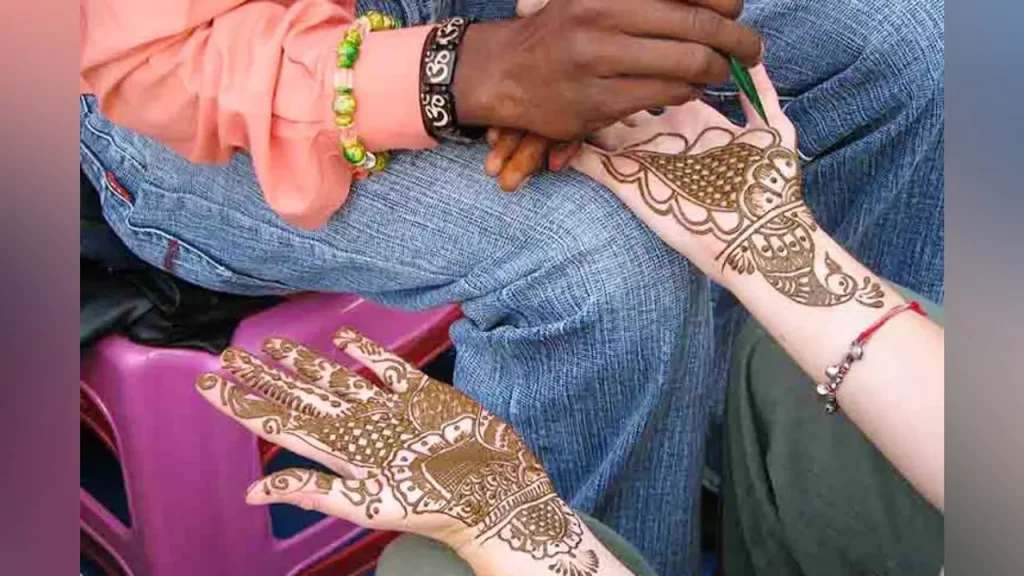
According to the Hindu calendar, the Vat Purnima is observed on the entire moon day of Shukla Paksha. The auspicious time for worship on Vat Purnima Vat is morning and afternoon. In the morning, the auspicious time for worship could be between 7.07 am to 8:50 one am.
All through Vat Purnima, women’s palms are adorned with elaborate mehndi designs, symbolizing marital harmony, durability, and prosperity. also referred to as Vat Savitri or Vat Poornima, this Hindu festival is determined through married girls who pray for the well-being and durability of their husbands.
As women speedy and perform rituals across the banyan tree (vat vriksha), the application of mehndi will become a good-sized part of the subculture, symbolizing the spouse’s devotion and commitment to her husband.
Vat Purnima significance in different cultures
Vat Purnima is celebrated in different countries as same as their origin India. Tilak is applied on forehead of krishna’s and then they all pray for long life.
Durga Puja
Durga Puja is an old subculture of Hinduism, although its specific origins are uncertain. Surviving manuscripts from the 14th century provide guidelines for Durga Puja, even as historic facts suggest that royalty and wealthy households were sponsoring predominant Durga Puja festivities for the reason that as a minimum the sixteenth-century.
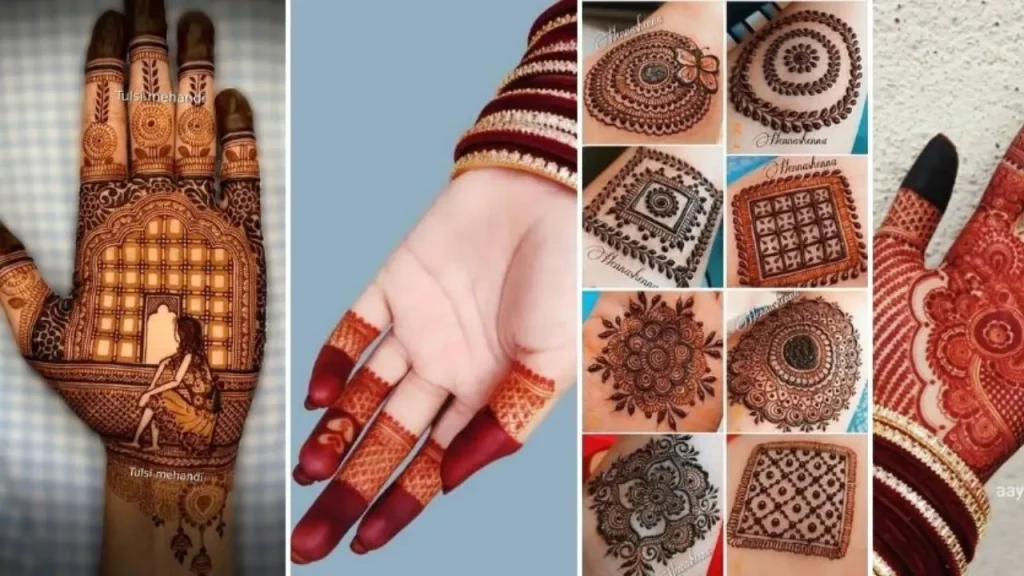
It starts on the equal day as Navratri, a 9-night festival in many northern and western states that more extensively celebrates the divine feminine (shakti). Durga Puja’s first day is Mahalaya, which heralds the arrival of the goddess.
In Durga Puja, fingers adorned with vibrant mehndi designs reflect the fervor, devotion, and party surrounding the worship of Goddess Durga. As devotees collect to honor the divine at some point of this auspicious competition, the utility of mehndi turns into a loved culture, symbolizing auspiciousness and reverence.
Elaborate styles of henna, presenting motifs of lotus, conch shells, and divine symbols, embellish arms with beauty and charm, echoing the vibrant colors and festive environment of Durga Puja.
Durga Puja Significance in different Cultures
Durga Puja is celebrated all over the world, uniting devotees in devotion and celebration. In Bangladesh, Bijoya Dashami brings pandals and merriment across the country, while in Nepal, it takes 15 days of worship to Durga and Shiva In the US. All over, from New York to Los Angeles, pandals decorate community spaces of communal worship. Similarly, Hindu communities in Canada, Australia and Singapore gather at temples and places to honor Goddess Durga with devotion and celebration.
Conclusion
Mehndi, which originated in pre-historic societies and is currently used at festivals and gatherings, is a symbol of beauty, a celebration of birthdays, and cultural legacy. whether redecorating arms with problematic designs throughout Eid-ul-Fitr or enhancing the festive environment of Eid-ul-Adha, Karva Chauth and many other festivals. Mehndi plays a quintessential position in expressing joy, spirituality, and community.
FAQs
What is an Eid Mehndi Calendar, and the way is it used?
An Eid Mehndi Calendar is a guide or agenda that outlines auspicious dates and times for making use of Mehndi for the duration of the Eid festivities. It normally consists of facts on unique days and instances while Mehndi utility is considered mainly auspicious, inclusive of earlier than Eid prayers or in the course of family gatherings.
Are there any conventional Mehndi designs or motifs associated with Eid celebrations?
There are numerous traditional Mehndi designs and motifs that might be commonly related to Eid celebrations. those may additionally encompass geometric patterns, floral designs, moon and big name motifs, and logos representing blessings, prosperity, and team spirit. Designs may vary depending on cultural preferences and regional traditions.
How can I create my own Mehndi Calendar?
Developing your very own Mehndi Calendar includes gaining knowledge of auspicious dates and times for Mehndi application all through Eid festivities, primarily based on cultural and nonsecular traditions. you can seek advice from nearby assets, spiritual authorities, or online sources to decide the maximum appropriate timings. additionally, recollect incorporating private possibilities and a circle of relatives traditions into your calendar to make it precise and meaningful for your celebrations.